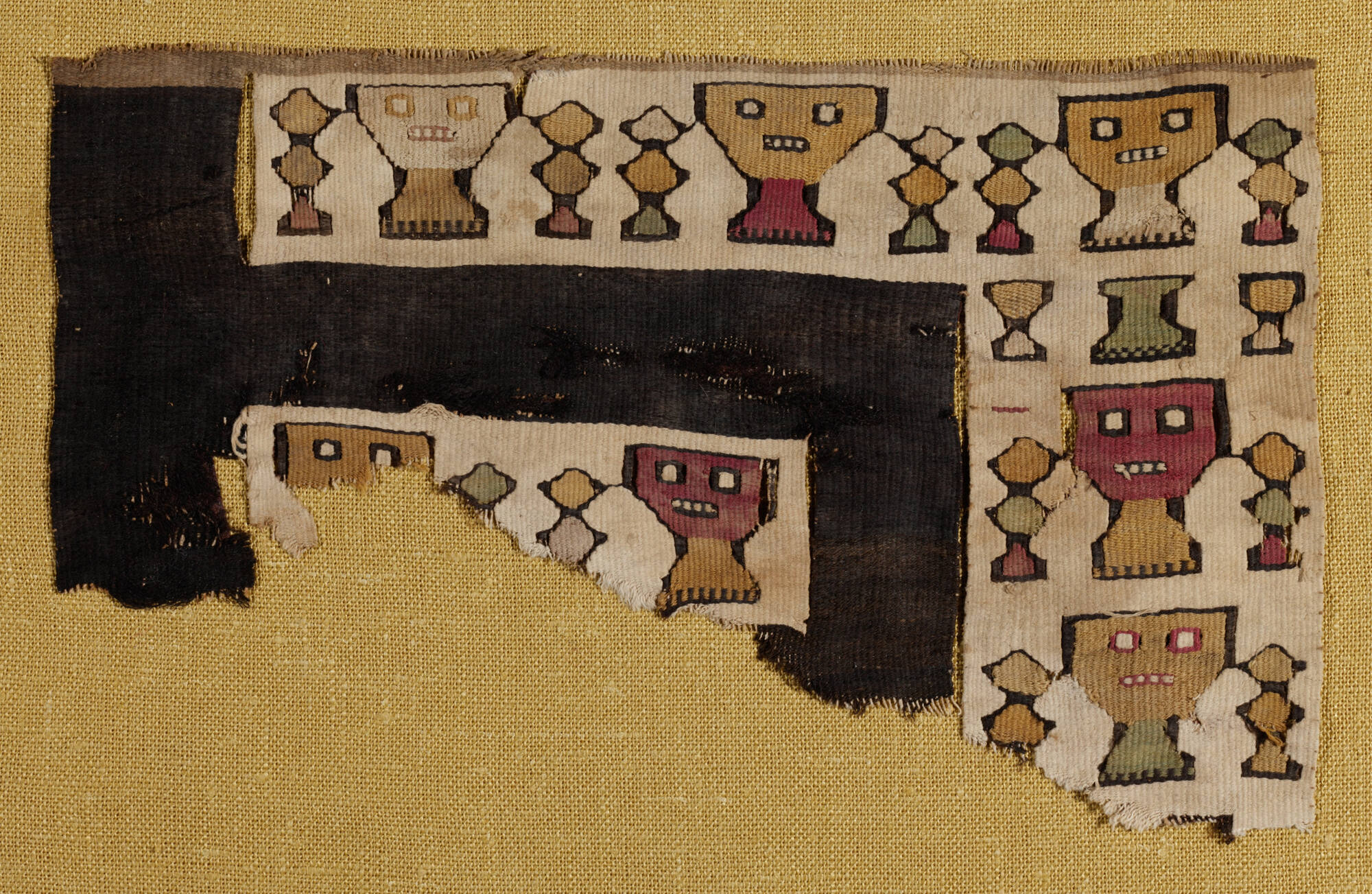
Object Details
Culture
Peru
Date
1000-1400 A.D.
Medium
Camelid wool on cotton
Dimensions
7 x 11 inches (17.8 x 27.9 cm)
Credit Line
Dr. and Mrs. Milton Lurie Kramer Collection; Bequest of Helen Kroll Kramer
Object
Number
70.166
WHERE WAS IT MADE?This was likely made in the coastal region of what is now Peru. We know this becau(…)
WHERE WAS IT MADE?This was likely made in the coastal region of what is now Peru. We know this because, although tapestries have been found in burials at some distance from their points of origin, tapestries woven in coastal regions were made using a technique that left vertical slits between different sections of color. This particular tapestry fragment has such slits. Although we do not know the exact provenance of the piece (where it was found) it was likely found in the coastal area as well, since the dry climate helped preserve buried textiles that would have otherwise decomposed in more humid regions.HOW WAS IT MADE?This textile is made from two kinds of fibers, cotton and camelid wool (from llamas, alpacas or vicunas). In coastal textiles, cotton usually served as the warp (the vertical threads of the weaving) and was left undyed. Camelid fibers, which are better at absorbing colors from dyes and more resistant to fading, were often used as the weft threads. Weft threads are woven in between the warp threads, and in Andean textiles are generally the only visible threads. Dyes were made from a variety of natural materials. Bright red came from the cochineal insect, while yellow colors came from a wide range of plants including pepper tree seeds. Blues were obtained from the indigo plant. Coastal textiles were mainly woven on small backstrap looms. The loose unwoven end of the warp threads is attached to a stake in the ground while the woven section is secured around the weaver’s waist, stretching the long warp yarns taut.HOW WAS IT USED?Textiles were generally used as garments. We know that textiles were highly valued commodities during the Inca period, used to bind contracts, pay a form of tax, and given as gifts. They were likely used for trade by many earlier cultural groups, as textiles made in one area have been found in burials in other, distant regions.












